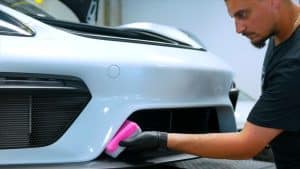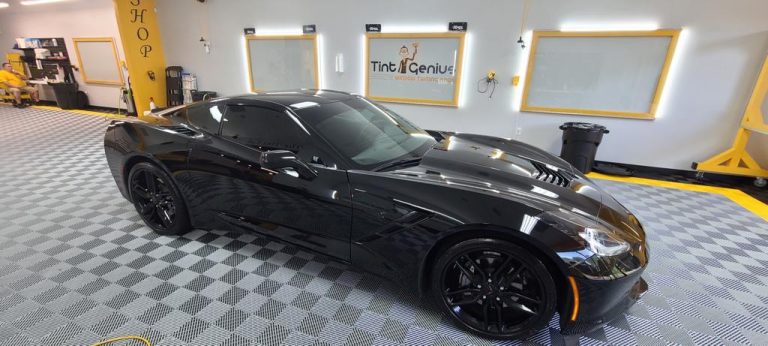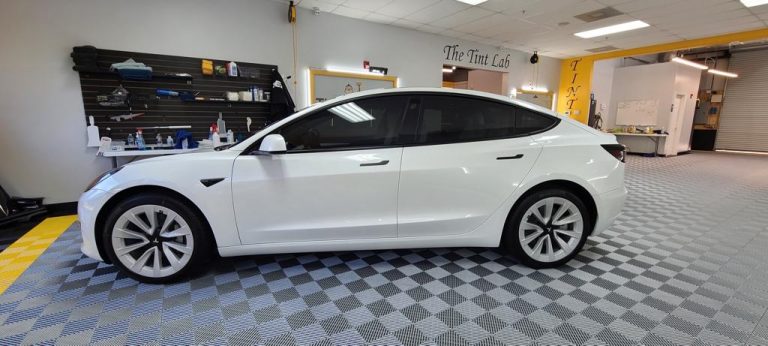Ceramic Coating vs. Micro-Scratches: Which Offers Better Surface Protection?
Ceramic Coating vs. Micro-Scratches: Which Offers Better Surface Protection?
When it comes to protecting your vehicle’s exterior, the options can sometimes feel overwhelming. You might find yourself wondering whether to invest in ceramic coatings or stick with traditional methods like waxing. After all, maintaining that showroom shine can be a real challenge, especially with everyday wear and tear from environmental elements. I’ve spent countless hours researching and testing various products to figure out what truly works best for keeping cars looking their best. In this article, we’ll explore the differences between ceramic coatings and micro-scratch protection, helping you decide which is the smarter choice for preserving the beauty of your ride over time.
Ceramic coatings provide advanced, long-lasting protection against environmental contaminants and minor surface damage, while micro-scratch protection typically refers to more superficial defense methods that do not offer the same level of durability or resistance. While both aim to maintain a vehicle’s appearance, ceramic coatings deliver superior longevity and ease of maintenance, making them a more robust option for preserving vehicle paint quality over time.

Ceramic Coating
At its core, ceramic coating is a liquid polymer that offers a robust protective layer when applied meticulously to your vehicle’s exterior. This is not just another detail job; when cured, it chemically bonds with the factory paint, creating a formidable barrier against the rigors of daily driving.
The primary components of ceramic coatings include silicon dioxide (SiO2) and titanium dioxide (TiO2), known for their strength and resistance. Together, they form a glass-like shield that repels water and effectively fights environmental contaminants such as dirt, grime, and road salt.
One of the standout qualities of ceramic coatings is their hydrophobic nature, which means water beads up and rolls off rather than staying on the surface to cause water spots or staining. Imagine driving through a rainstorm and seeing the water just bead away—it’s almost like magic! Additionally, this coating acts as a sacrificial layer, reducing the likelihood of damage from everyday encounters like tree sap or bird droppings.
Key Benefits of Ceramic Coating Over Traditional Wax
When we compare ceramic coatings to traditional wax offerings, like good ol’ carnauba wax that typically lasts only a few months, the advantage becomes obvious. A quality ceramic coating can protect your car’s finish for several years—often between 2 and 5 years, depending on how well you maintain it. You might even find products such as XPEL Fusion Plus boasting warranties ranging from 1 to 8 years! Not only do these coatings provide long-lasting protection, but they also enhance the visual appeal of your vehicle by adding depth and vibrance to the paintwork, resulting in that “new car sheen” every day.
Beyond aesthetics and longevity, ceramic coatings also offer ease of maintenance. Because dirt has a harder time adhering to the smooth surface created by ceramic coatings, you’ll find washing your car less of a chore. Regular cleaning becomes easier, meaning you spend less time scrubbing and more time enjoying your ride.
Micro-Scratches Explained
Micro-scratches are subtle abrasions that can diminish the appearance of your car’s surface quality. Often minuscule and sometimes even difficult to see, these scratches form from everyday activities we often take for granted, like washing our vehicles or simply driving down the street. Their effects can accumulate quickly, and suddenly, what once looked pristine now appears dull and worn.
Causes and Impact on Appearance
One of the most frequent causes of micro-scratches is improper washing techniques. Using a dirty or abrasive cloth can easily create fine scratches on the paint; even the softest towels can become culprits if they’re not clean. Environmental factors play a role too. Tiny rocks or road debris can scratch your vehicle’s finish with every encounter. Even something as innocuous as blowing wind laden with dust can contribute to this problem over time.
Studies indicate that micro-scratches can reduce the gloss level of a vehicle’s paint by up to 30%, significantly impacting its visual appeal.
Although individually minor, these scratches can accumulate, leading to a detracting effect on your vehicle’s overall aesthetic. Picture a beautiful, glossy red sports car—now imagine it clouded by thousands of tiny imperfections; that radiant finish could quickly look neglected without proper care. This reality underscores the importance of not only regular cleaning but also choosing suitable products and techniques to avoid such damage.
From personal experience, I’ve learned that maintaining a vehicle isn’t just about making it shine; it’s about preserving its integrity. I remember vividly the first time I noticed micro-scratches on my ride after using an old towel that had seen better days. The moment I switched to quality microfiber cloths—like those from The Rag Company—was a game-changer. It taught me not just to clean but to care for my car’s finish.
While ceramic coatings offer a layer of defense against micro-scratch formation, understanding their limitations and proper application is essential for truly protecting your investment. This preparation is crucial before you explore the next steps in maintaining your vehicle’s pristine condition.
Application Process
The journey to a brilliantly coated vehicle begins with a series of carefully executed steps designed not only for aesthetics but also for the longevity of your car’s paint job. First and foremost is the surface preparation phase. This initial step cannot be overlooked; it’s critical to handwash the vehicle thoroughly to remove dirt, grime, and contaminants that might interfere with the adhesive properties of the ceramic coating. Using a pH-neutral soap, like Adams PH-neutral soap, ensures that the paint surface remains unblemished during this wash.
However, washing alone isn’t always sufficient for optimal results. For more thorough cleaning, especially if you’ve had your vehicle exposed to harsh environmental elements like tree sap or road grime, consider a chemical decontamination process followed by using a clay bar treatment. This two-pronged approach can effectively lift residues that ordinary washing may miss, creating an immaculate base ready for application.
Following surface preparation comes the crucial step of paint correction.
Any imperfections on your vehicle’s surface, such as scratches, scuffs, or swirl marks, can diminish not only the visual appeal but also thwart the effectiveness of the ceramic coating. During this stage, applying polishing compounds using a dual-action polisher is recommended. These compounds work wonders in refining the surface while correcting various imperfections. The goal here is to create a flawless canvas for the ceramic coating to bond with—think of it as priming a wall before painting; you want everything smooth and perfect.
Once you’ve achieved that smooth finish, it’s time for perhaps the most exciting part: the application and curing of the ceramic coating itself.
The application should be done panel by panel—this methodical approach ensures even coverage without leaving streaks or patches. Using an applicator pad, gently spread the ceramic coating across each section; consistency is key here. After applying the product, patience is paramount, as it typically requires about 24 to 48 hours to cure fully, depending on environmental conditions such as humidity and temperature. Curing time should not be rushed; allowing it to set properly will ensure its durability and effectiveness.
By following these steps meticulously, you’re not just applying a layer; you’re investing in your vehicle’s future protection against environmental hazards.
With these principles understood, we can now explore how these processes enhance your vehicle’s shielding capabilities.
Protective Qualities
The protective qualities of ceramic coatings serve as a significant selling point, and for good reason. They are truly game-changers when it comes to safeguarding surfaces. One standout feature of these coatings is their hydrophobic properties. Essentially, ceramic coatings create a slick, water-repellent surface that causes water to bead up and roll off with ease. This minimizes the accumulation of annoying water spots and impedes the attachment of contaminants such as dirt and mud. Imagine washing your car less frequently because grime has a harder time sticking to it. Less washing means less wear on your surfaces, benefiting both you and your vehicle.
I can’t tell you how many times I’ve seen someone attempting to scrub dried bird droppings off their car hood, looking as though they’re battling a stubborn stain. With ceramic coatings, those driven moments would be fewer and farther between!
Let’s discuss environmental contaminant resistance. Ceramic coatings offer robust protection against pesky intruders like bird droppings, tree sap, and that dreaded road salt that can wreak havoc on your vehicle’s paint over time. Once applied, these coatings become a formidable shield against life’s little mishaps; they help maintain the integrity of your surfaces by providing a barrier that is difficult for harmful substances to penetrate. For those living in areas prone to extreme weather or wildlife interactions, these qualities prove invaluable.
Moreover, understanding the chemical resilience of ceramic coatings reveals even more about their long-term advantages.
In addition to repelling water and resisting dirt, ceramic coatings boast impressive chemical resistance. This means they can withstand degrading effects from harsh substances, including oils and solvents, without breaking down. Considering how your car encounters everything from road grime to splashes from puddles filled with industrial runoff, having this layer of protection is essential. Maintaining the pristine appearance of your vehicle no longer feels like an uphill battle; instead, it’s simply part of owning an investment that’s well-protected.
Whether you’re considering protecting your vehicle or any other surface, ceramic coatings provide peace of mind while enhancing aesthetic appeal.
As we continue to explore these innovative solutions, we will examine how advancements in technology redefine expectations for durability and maintenance in surface protection.
Durability and Maintenance
The impressive longevity of ceramic coatings is one of their standout features. Unlike traditional waxes or sealants that might only last a few months, professional-grade ceramic coatings like XPEL Fusion Plus can endure for 3 to 8 years. However, this endurance relies heavily on proper maintenance.
Long-Term Benefits
It’s fascinating to think that with just a couple of simple habits, you can keep that protective layer intact for years. Factors such as your local climate, exposure to road salt, and general wear can influence how long the coating will last. By taking proactive steps, you amplify the lifespan significantly. Imagine enjoying your vehicle’s shining exterior without worrying about immediate fading or discoloration that often accompanies lesser protective measures.
This durability doesn’t mean you can completely ignore maintenance. Think of maintaining a ceramic coating as similar to caring for a fine piece of furniture: regular upkeep ensures that the beauty remains while preventing damage from occurring below the surface. Just as dust attracts more dust, ignoring minor maintenance tasks can turn into larger issues down the road.
Maintenance Tips
A simple but effective recommendation is to wash your vehicle regularly using pH-neutral soap. Traditional soaps can strip away essential elements of the coating over time, leading to diminished protection. You should also avoid automated car washes with harsh brushes that could compromise the integrity of the coating. Instead, try handwashing using a soft microfiber cloth.
Aesthetic Benefits
The aesthetic appeal of a vehicle is often just as important as its functionality, and ceramic coatings offer significant advantages in this area. One of the standout benefits is the enhanced gloss they provide. Imagine driving your car down a sunlit road; the paint shimmers and sparkles, catching every passerby’s eye. This deep, glossy finish is not just about beauty—it creates a reflective surface that enhances the vibrancy of your car’s color, making it appear almost as though it just rolled off the showroom floor.
Moving onto another crucial benefit, we find that color preservation cannot be underestimated. Ceramic coatings serve as a shield against harmful UV rays and environmental pollutants that can cause fading or discoloration over time. For owners of brightly colored or custom-painted vehicles, this feature is invaluable. By maintaining vibrancy, you ensure that your investment doesn’t suffer from premature aging or dullness—issues that often plague cars treated with traditional waxes.
Additionally, think about how these protective qualities elevate the aesthetics of less vibrant colors as well. A subtle shade can benefit from the depth offered by a ceramic coating, lending it a richer appearance that catches attention without being overly flashy.
Consider also the ease of maintenance these coatings provide; they create a hydrophobic layer that repels water and dirt, allowing for easier clean-up after rain or muddy roads. The less frequent need for washing means your car stays cleaner longer and maintains its visually appealing exterior effortlessly.
In summary, ceramic coatings not only enhance your vehicle’s appearance but also protect its finish over time. If you’re seeking to both protect and dramatically enhance the appearance of your vehicle, explore the ceramic coating services available at Tint Genius. Contact us or call us at 678-609-6005 to give your car the luxurious treatment it deserves!



